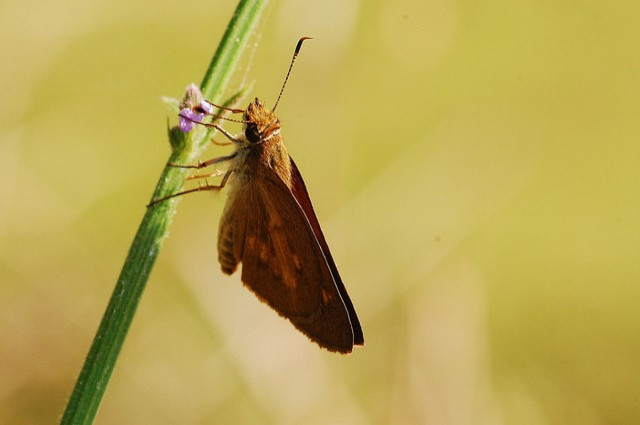Not Quite Ready For Romance: Virgin Male Moths? Premature Launches Could Lead To Poor Flight Performance

Virgin male moths suffer from their own kind of premature performance problems. Once they catch the scent of a female, they're quick to take flight before their wing muscles are fully warmed up, which translates into less flying power, according to a new study.
Before a moth takes flight, he has to shiver to warm up his wing muscles. Previous studies have established a direct relationship between higher muscle temperatures after the end of this warm-up period and more power production by the moth's wings, which translates into both faster speed and better maneuverability.
In a study published Thursday in the Journal of Experimental Biology, University of Utah scientists used an infrared video camera to see how long Helicoverpa zea moths -- more commonly known in their larval stage as corn ear worms, a common agricultural pest -- warmed up before they took off after female pheromones that were wafted at them.
The decision to take flight after a female odor is not one that would be taken lightly by the moth, because it's a huge expenditure of energy, according to senior author Neil Vickers.
Insect flight muscles are among the most metabolically costly in the animal kingdom. In order to fly, you have to use a lot of oxygen and generate the power, Vickers said in a statement Thursday.
The moths that smelled female pheremones started shivering faster, took off sooner and took flight at a lower body temperature than moths exposed to other, less enticing scents.
It is possible that taking off sooner is a calculated move for the moths in order to get a jump on their romantic rivals.
Moth mating is a competitive race known as scramble competition, in which a female advertises her availability by emitting pheromones.
That pheromone is probably going to be detected by several males, and they're going to try to compete and get to the female first, lead author Jose Crespo said in a statement Thursday. You can see how it might be advantageous to take off sooner and try to get to the female first.
But that haste comes at a deferred cost. In a second set of experiments, the team showed that taking off at cooler temperatures translated into less powerful flight. They did this by measuring the force of moths' flights at different temperatures, using force sensors on pins sealed to the moths' thoraxes with wax.
Moths attained maximum flight power when their thoraxes were warmed to about 90 degrees Fahrenheit, but the moths chasing female pheromones in the previous study only warmed up to about 82 degrees Fahrenheit.
We think there is a compromise between heating up faster to a lower temperature to arrive at that female first or waiting a little longer to heat up to a higher temperature and make sure you're going to make it to the female, Crespo says.
The study is a bit limited since the scientists were only looking at virgin males. What's needed is a follow-up study to see if more experienced moths will hang back after smelling a pretty pair of wings in order to warm up longer and outlast the competition.
Whether on the wing or on the ground, resisting the urge to chase a potential mate too eagerly could be a better strategy.
It's costly to fly, to jump into a relationship, Vickers says.
SOURCE: Crespo et al. Pheromone mediated modulation of pre-flight warm-up behavior in male moths. The Journal of Experimental Biology 215: 2203-2209.
© Copyright IBTimes 2024. All rights reserved.





















